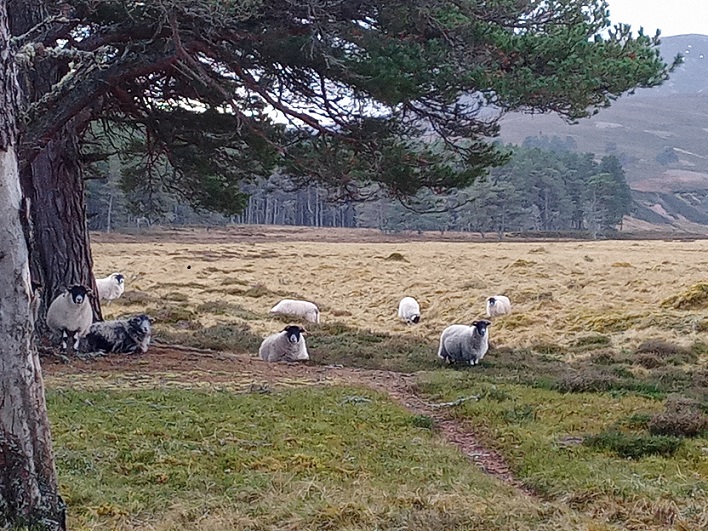
[Update: since posting this I have been contacted by Seafield Estates who have informed me that “there are 20 sheep in Kinveachy, they have not been there long and we have already arranged for them to be gathered and returned to their rightful owner”. They also told me that “There are occasionally sheep in the fields at Inverlaidnan (for the same reason[as the cattle]) but they are securely fenced on grass parks and outwith the regeneration zones”.]
Following my post on how sheep grazing is preventing tree regeneration at Coille Coire Chuilc (see here), I was sent a couple of photos of sheep in another area of protected Caledonian pine forest, this time on Kinveachy just outside the Cairngorms National Park boundary. It illustrates perfectly the point about sheep taking shelter under the trees and, as you can see, there is not a sapling or young pine in sight.
Quite a contrast to couple of kilometres further downsteam on Kinveachy where the pine forest is regenerating successfully:
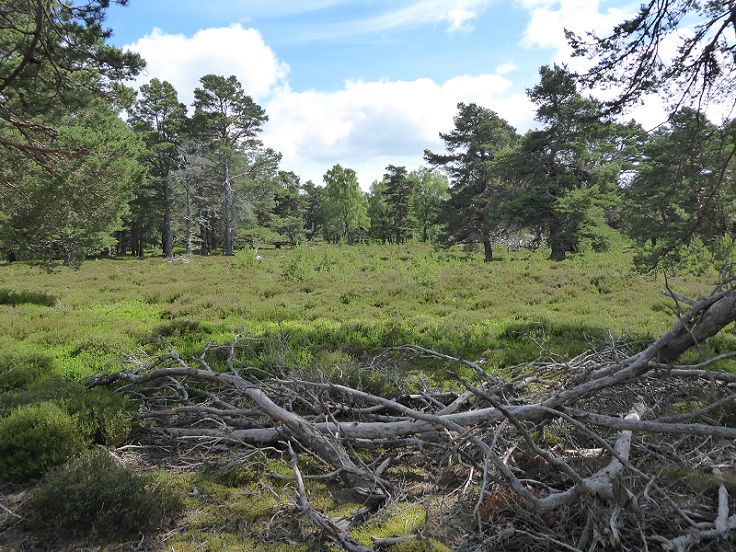
Unlike at Coille Coire Chuilc the landowner at Kinveachy, Seafield Estates (see here), is trying to enable the Caledonian Pine Forest to regenerate through reducing deer numbers and strict control of agricultural grazing:
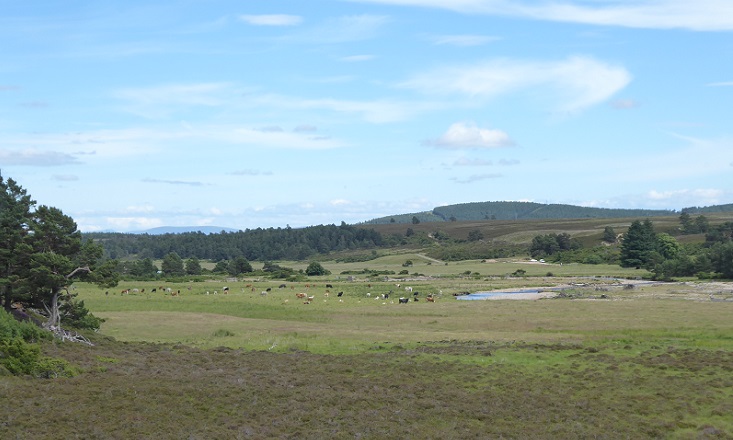
The intention of the cattle grazing is to enhance areas which are important for grassland species along sections of the river. The grazing is tightly controlled. Along other parts of the Dulnain the cattle are kept out and trees are regenerating in profusion:
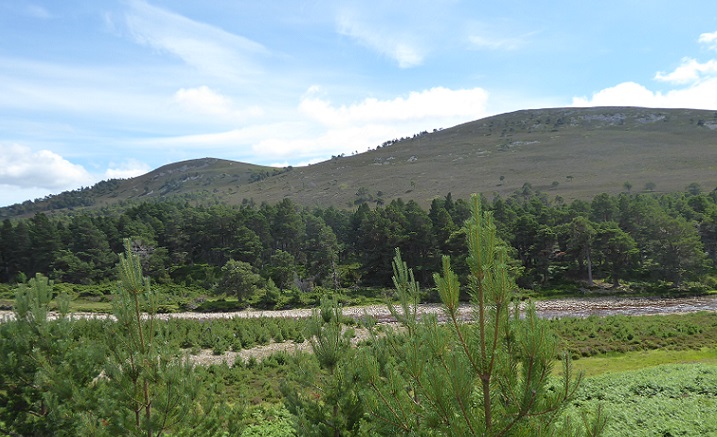
Unfortunately, Sitelink (see here), the website that provides details of Scotland’s protected sites and is managed by NatureScot has been out of commission for the last couple of weeks so I have not been able to check the site management statement for Kinveachy Forest. But my understanding is that sheep grazing is not part of the plan and the sheep in the photos should not be there:
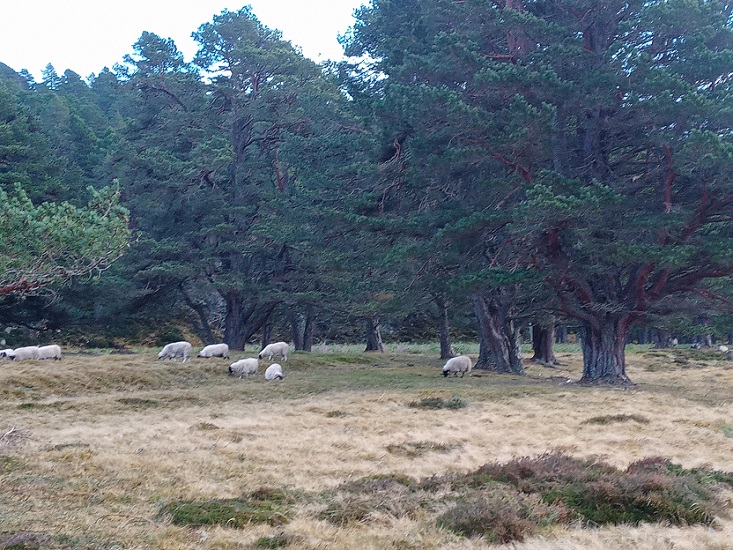
It is possible that Seafield Estates have been grazing sheep on the moorland beyond the western boundary of the protected area, land which is still managed as grouse moor:
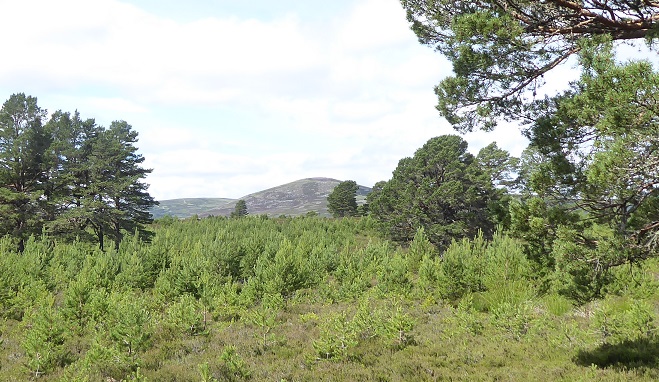
Sheep, however, would be unlikely to be left on the high moor at this time of year and it seems more probable that the sheep are from one of the estates further up the Dulnain and have come down the glen in search of food, as the deer do each winter. In order to prevent this a stock fence – or rather two stock fences – run along the boundary between Kinveachy and Kinrara, the estate bought by BrewDog (see here) just under a year ago.
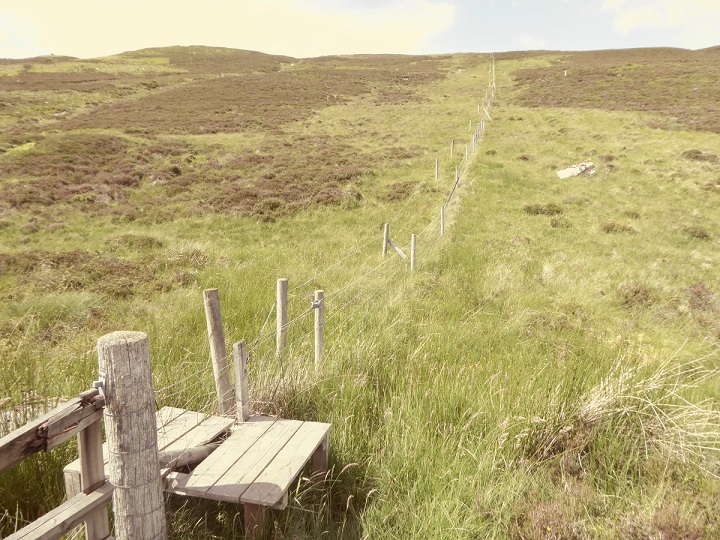
While the gate was locked when I last visited – perhaps to stop walkers and cyclists inadvertently letting sheep in – it was in a poor state and sheep might well have been able to get through. With further stock fencing upsteam on Kinrara, it appears most likely that if the sheep did come from upstream they came from BrewDog’s property.
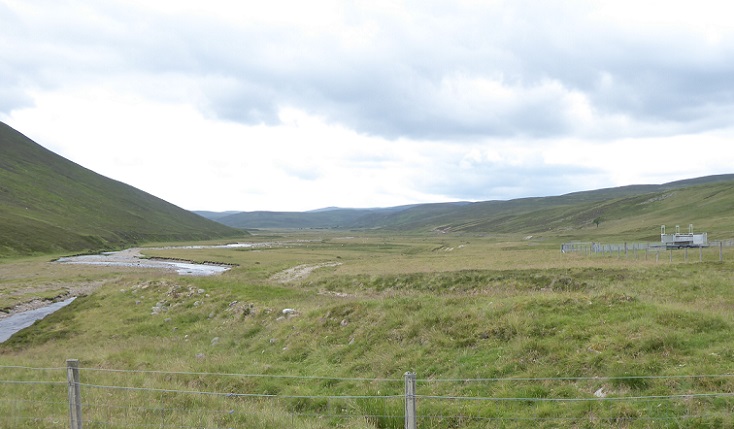
After BrewDog bought Kinrara, concerns were expressed in the media about the end of sheep farming on the estate. These were also illustrated by an entry from the bothy book:
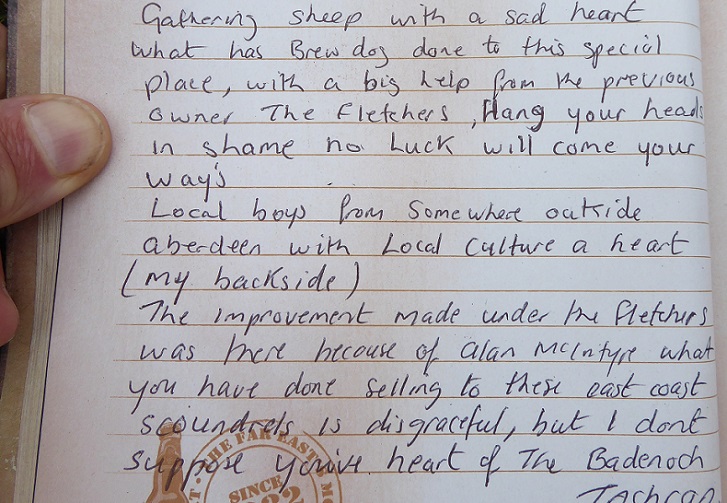
While I disagree with the concerns expressed – sheep farming has been a major cause of rural depopulation in the Highlands – at the time I visited in July there was no sign that the sheep had actually been removed.
If the sheep in the photos from 2nd January are from Kinrara, one wonders what damage they did to the saplings regenerating under the remnants of the Caledonian Pine forest there (see here)? What would that say about BrewDog’s fitness to manage the land?
Wherever these sheep were from, however, what should be obvious is that one of the reasons why there are so few signs of natural regeneration where the Caledonian Forest crosses the Kinveachy/Kinrara boundary is that sheep have not been controlled properly. Unfortunately, there are no mechanism to hold landowners to account for their sheep. In the old days there used to be public pounds where stray sheep were kept until the appropriate fine was paid: what price should a landowner have to pay for allowing their sheep to graze the Caledonian Pine Forest? Or an area of Atlantic oak wood?
The wider issue is that the damage done by sheep has been used as an excuse by commercial forestry interests to argue that natural regeneration doesn’t work and that fenced exclosures – paid for at vast public expense – are required. Hence BrewDog’s proposals to plant and fence a “Lost Forest” at Kinrara. Wherever the sheep in the photos were from, it’s time BrewDog ditched those plans, removed the sheep from Kinrara if they haven’t done so and employed some local stalkers to bring deer numbers down so the Caledonian Pine forest can regenerate and expand naturally.
Addendum
After posting this, another reader sent me the “Kinveachy Forest Special Area of Conservation Conservation Advice Package” approved by NatureScot on 20th February 2020. It includes the following statement:
“The main herbivore on this site is red deer although sika and roe deer also occur. Sika are removed wherever possible, roe deer are controlled to maintain a low population, and red deer have been maintained at low levels under agreed management since c2005, latterly with assistance from forestry grants. This has created abundant regeneration although this is not yet tall enough to escape browsing so it is critical to maintain low numbers of red deer”.
Further confirmation that sheep are not supposed to be on site.
The sheep problem I can sympathise with to some extent. We graze a six acre field on our croft with sheep and they are the most determined cusses. If they get a bit short of grazing towards the end of the season and there is something a bit better other side of a fence. they will push and batter fences to get there. Rylock has been a significant innovation in creating reliable stock fencing. Even badgers, which I have found ripping large holes in good fences with us, seem unable to damage it. Sheep certainly move long distances to get what they want. Morven hill on Deeside is on base rich rock and gives good grazing. A shepherd complained to me that, if they put sheep on Culblean hill next to it, which is a granite hill with poorer grazing, they just shoved off and went to Morven.